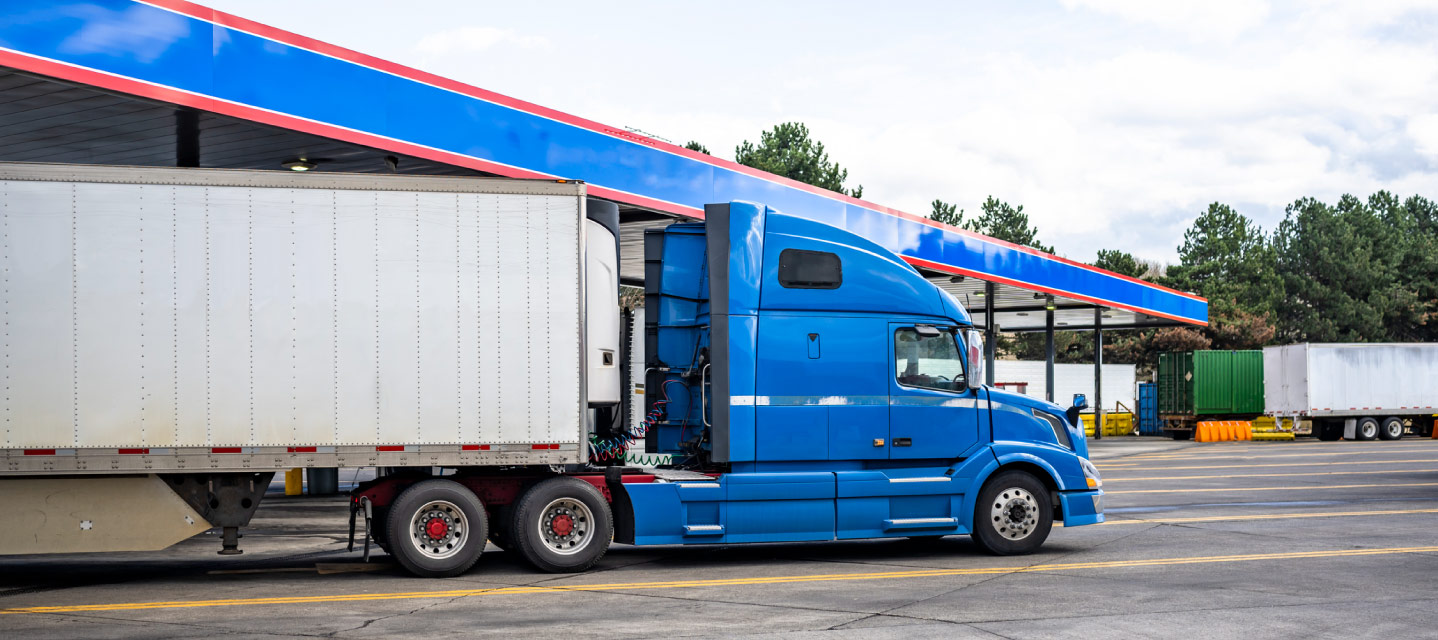What is route optimization? A guide to improving fleet efficiency
Tired of inefficient routes and missed deliveries? Discover how route optimization can improve fleet operations.

Key Insights
- Route optimization leverages data and technology to improve the efficiency and performance of fleet vehicle routes.
- Key features: Real-time tracking, automated route planning, driver scheduling and comprehensive reporting.
- Benefits: Reduce costs, improve driver productivity, enhance customer satisfaction, increase delivery capacity and minimize environmental impact.
Not too long ago, fleet drivers relied on paper maps and memory to navigate routes. However, with the advent of advanced technology and fleet management solutions, businesses have recognized the power of route optimization to transform their operations.
While planning routes might sound as simple as plugging an address into a GPS, the reality is far more complex. Juggling multiple drivers, diverse destinations, tight delivery windows and unexpected delays can quickly become a logistical nightmare.
Effective route optimization eliminates the guesswork for more efficient route planning. Let's explore how route optimization tools can revolutionize your fleet efficiency.
What is route optimization?
Route optimization is the process of planning the most efficient routes to reduce time and costs. This is especially crucial in industries like delivery services, field service and transportation, where businesses face challenges like rising fuel costs, traffic congestion, tight delivery windows and increasing customer expectations.
That's where route optimization and TMS software come in handy. Not only can optimizing routes and streamlining dispatch communication save your fleet time, but it can also save you money on fuel and maintenance costs with less idle time.
How does route optimization work?
In an economy of rising fuel prices, routing has proven to be one of the most important features in fleet management. According to trucking statistics, it can significantly increase the efficiency and productivity of the fleet while simultaneously reducing costs. But how does it work?
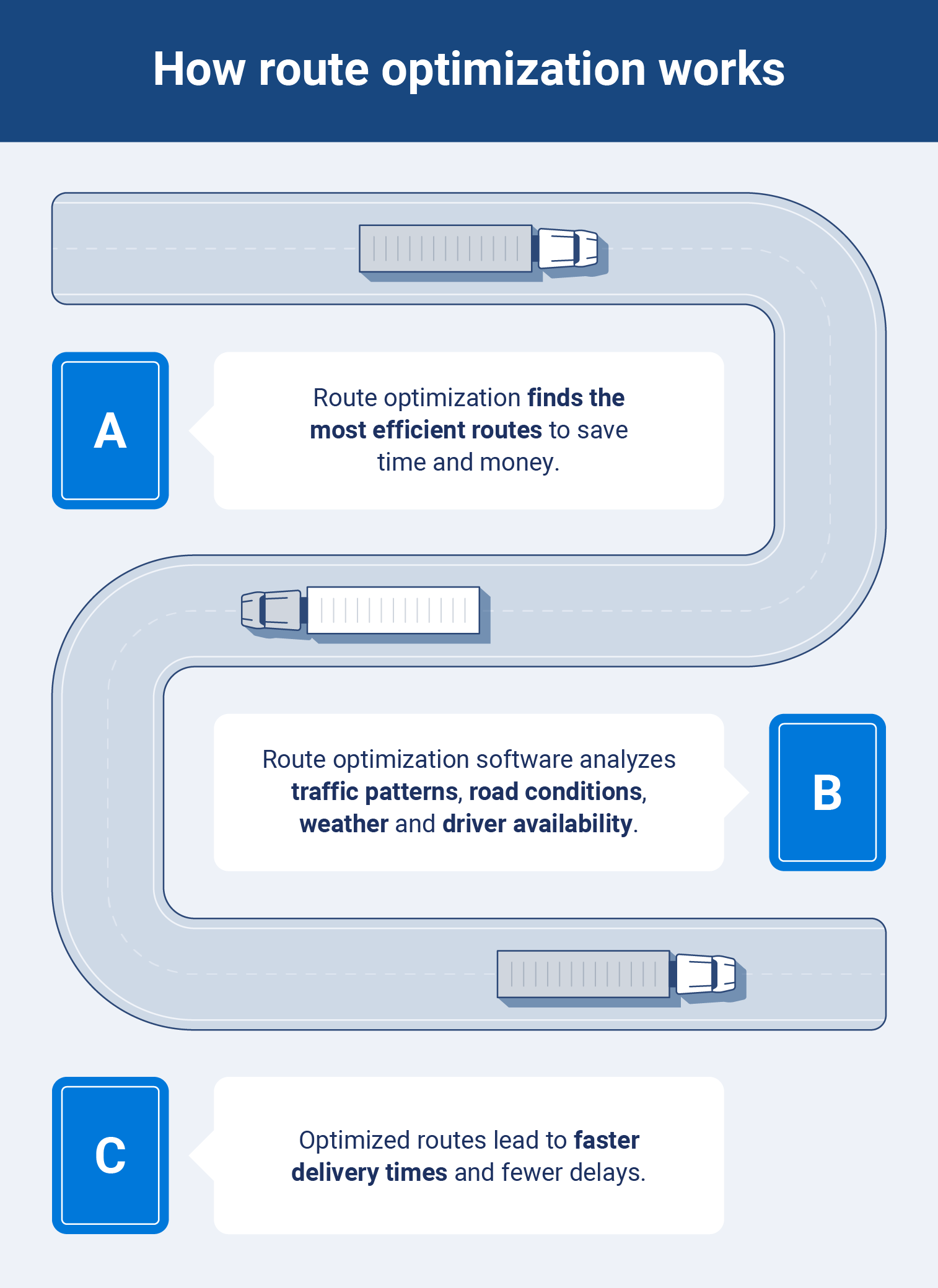
Fleet route optimization uses algorithms and real-time data to create the most efficient routes. Route optimization GPS tracking provides precise location data, while telematics systems gather information on vehicle speed, fuel consumption and engine performance.
This data is then fed into routing software that considers factors to determine the most efficient route for each driver, including:
- Traffic patterns
- Road conditions
- Weather forecasts
- Driver availability
By utilizing this technology, businesses can significantly reduce fuel costs, minimize vehicle wear and tear and improve driver productivity. Optimized routes can also lead to faster delivery times and fewer delays for improved customer satisfaction.
The benefits of route optimization
Finding ways to boost efficiency and reduce operational costs is crucial for a successful fleet. Route optimization offers a powerful solution to achieve both of these goals.
From cutting down on fuel consumption and mileage to enhancing customer satisfaction and increasing delivery capacity, optimization technology empowers businesses to streamline their operations through improved route planning.
.png)
Reduces costs
For most fleets, reducing costs is a daily mission. With efficient routing, vehicles undergo less strain, translating to fewer fleet maintenance needs and lower expenses.
For example, choosing a route that avoids a recently reported accident site not only contributes to the technician’s safety but also saves valuable time and helps reduce fuel consumption that would otherwise be wasted in heavy traffic.
Improves route visibility
Route optimization provides real-time asset location for greater visibility into your fleet operations. This means fleet managers can view a live map of all vehicle locations, enabling you to:
- Redirect drivers
- Monitor progress
- React to disruptions
- Communicate with customers
This real-time visibility empowers you to stay ahead of the curve, optimize resource allocation and make data-driven decisions to improve operational efficiency.
Enhances customer satisfaction
One of the major benefits of route optimization is reduced travel time leading to quicker service for customers. This efficient scheduling capability not only shortens the customer’s wait time but also minimizes the time drivers spend waiting at customer locations.
Less time spent idling at garages or households means more cost-effective operations and more customers served daily, contributing to an overall increase in customer satisfaction.
Improves resource utilization
Thanks to intelligent scheduling, businesses can handle more appointments without the need to expand their fleet. This leads to improved fleet asset utilization.
Not only does this mean you can increase your service capacity, but you’ll also enjoy greater scheduling flexibility to meet customer needs efficiently. Servicing more customers within the same amount of time has transformed technicians from cost centers to strategic assets.
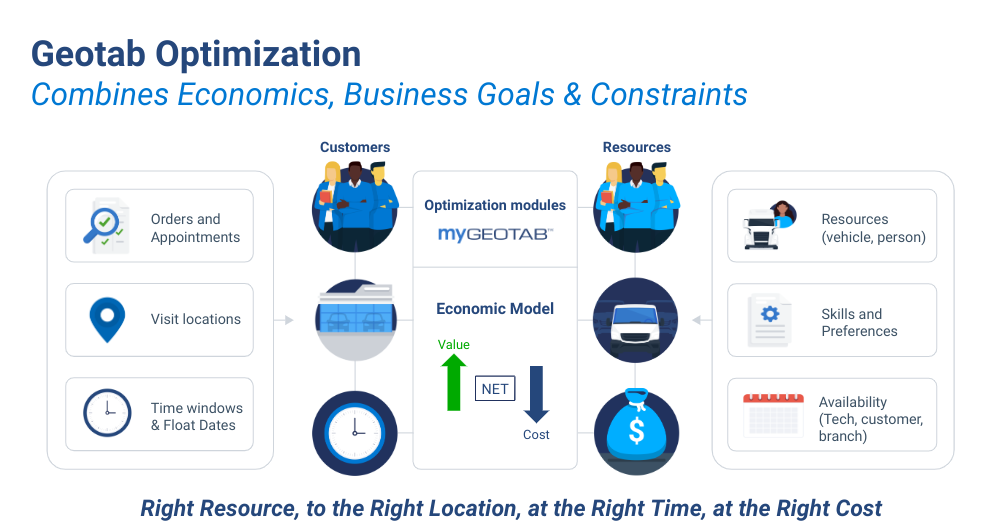
Route optimization challenges
In an ideal world, route planning and optimization for fleets would be straightforward. However, the reality of fleet management is far more complex.
Real-world routing is complicated and filled with variables that can change at a moment's notice. Factors such as traffic conditions, customer availability and unexpected delays transform routing into a challenging task that requires flexibility and strategic planning.
Unexpected delays
Unexpected delays and service needs are one of the most frequent challenges fleets face. Accidents, road construction and even unexpected bad weather can disrupt plans.
Without preventative route optimization software, these delays can negatively impact everything from customer experience to vehicle maintenance needs.
Driver schedules
Creating driver schedules that maximize efficiency can be difficult. It’s not just about finding the shortest routes but also factoring in driver availability, breaks and hours-of-service limits. Overlapping shifts, unexpected absences and varying skill sets among drivers further complicate the scheduling process.
A well-optimized schedule needs to consider driver preferences and expertise alongside route efficiency, ensuring that the right driver with the right skills is assigned to the right job at the right time.
Manual planning
Manual route planning is inefficient and time-consuming. Without the insights provided by data analysis and route optimization software, planners often struggle to create efficient routes that account for real-time traffic, delivery windows and driver availability.
These challenges are only amplified when managing EV fleets. Planners need to consider charging station locations, charging times and battery range alongside traditional routing factors. Manually calculating these variables and adjusting routes in real time becomes incredibly complex.
Customer expectations
Customers expect timely and reliable deliveries, which can be a significant challenge for businesses, especially with the growing demand for quick delivery services.
Unexpected delays, traffic congestion and inaccurate ETAs can lead to missed deadlines, frustrated customers and, ultimately, damage to brand reputation.
How to improve efficiency with route optimization software
Facing challenges with inefficient routes, missed deliveries or strained driver capacity? Route optimization software offers a powerful solution to the challenges of modern fleet management.
Optimize routes in real-time, gain complete visibility of your fleet, streamline driver management and enhance customer communication — all while maximizing efficiency for both traditional and EV fleets. Here's how:
- Automated route planning: Instead of relying on manual calculations and guesswork, route optimization software automatically generates the most efficient routes considering factors like distance, traffic conditions and driver availability.
- Real-time visibility and updates: With real-time tracking, fleet managers gain visibility into the location and status of all vehicles. This allows for proactive monitoring, quick response to unexpected delays and accurate ETAs for customers.
- Enhanced driver management: Route optimization software maximizes driver productivity and promotes a fair workload distribution considering factors like hours-of-service regulations, breaks and skill sets.
- Improved customer communication: Businesses can provide accurate ETAs and real-time delivery updates to better manage customer expectations.
- EV fleet optimization: For electric vehicle fleets, route optimization software considers charging station locations, charging times and remaining battery range to minimize downtime and improve EV efficiency.
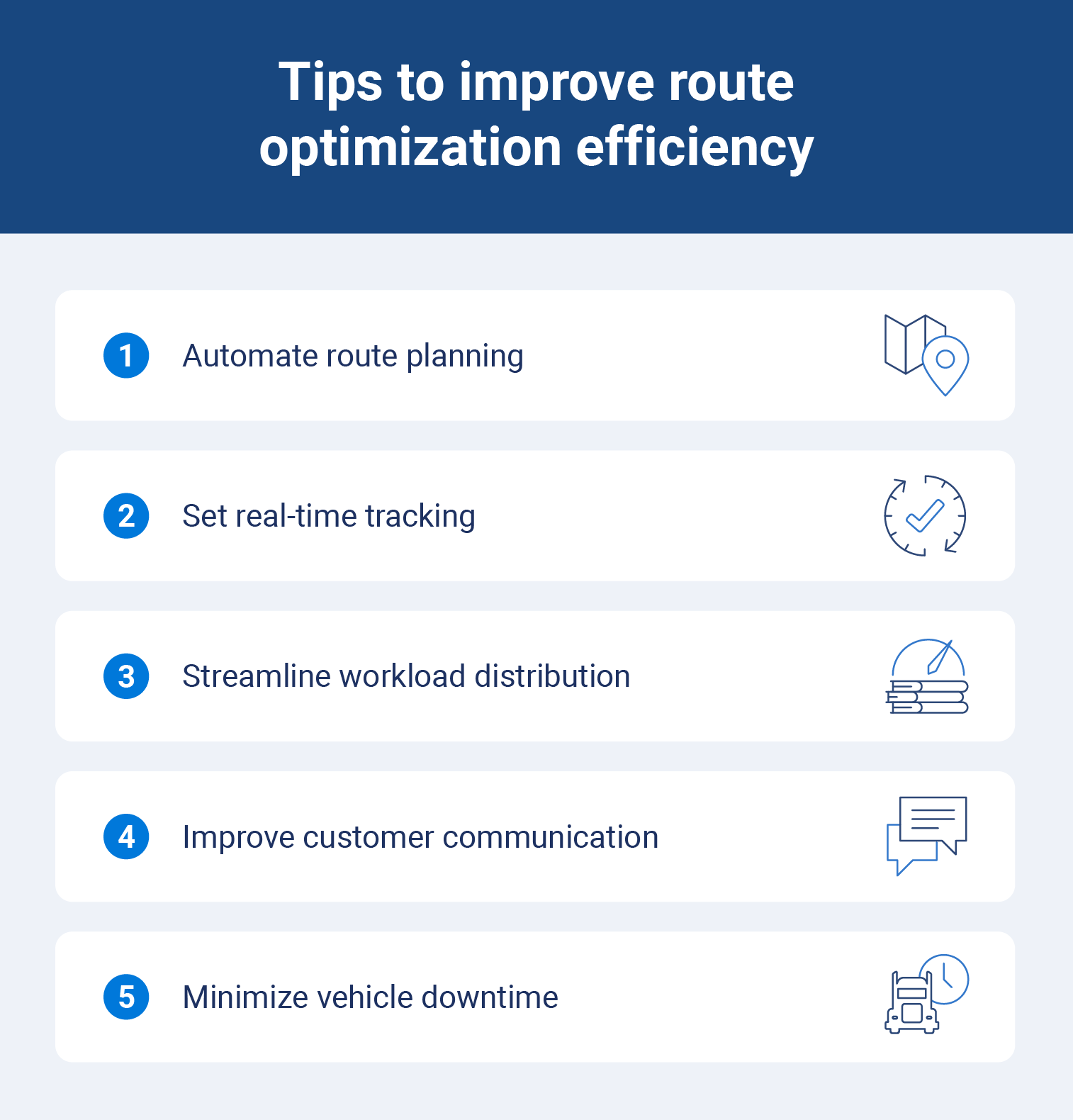
Get real-time optimization with Geotab routing
Tired of inefficient routes and missed deliveries? With a comprehensive fleet management solution, you can unlock the full potential of real-time route optimization.
Geotab's route optimization software empowers fleet managers to effortlessly design efficient multi-stop routes. With easy access to summary reports, you can quickly analyze arrival and departure times, as well as driving distances, to optimize fleet performance.
Subscribe to get industry tips and insights
Frequently Asked Questions
Fleet optimization is the process of using data and technology to improve the efficiency and performance of a fleet of vehicles. This can include multi-stop route planning, vehicle maintenance, driver management and fuel consumption.
Route optimization uses technology, like GPS tracking, telematics and advanced algorithms, to determine the most efficient routes for delivery drivers.
Route optimization software is a tool that helps businesses plan and execute the most efficient routes for their vehicles using advanced algorithms to analyze factors like traffic conditions, distance and delivery time windows to create optimal routes.
Route optimization software helps fleet managers plan the most efficient routes, which saves time and fuel costs and improves delivery speed.
The Geotab Team write about company news.
Table of Contents
Subscribe to get industry tips and insights
Related posts


How to avoid high downtime costs for construction fleets
March 10, 2025
2 minute read

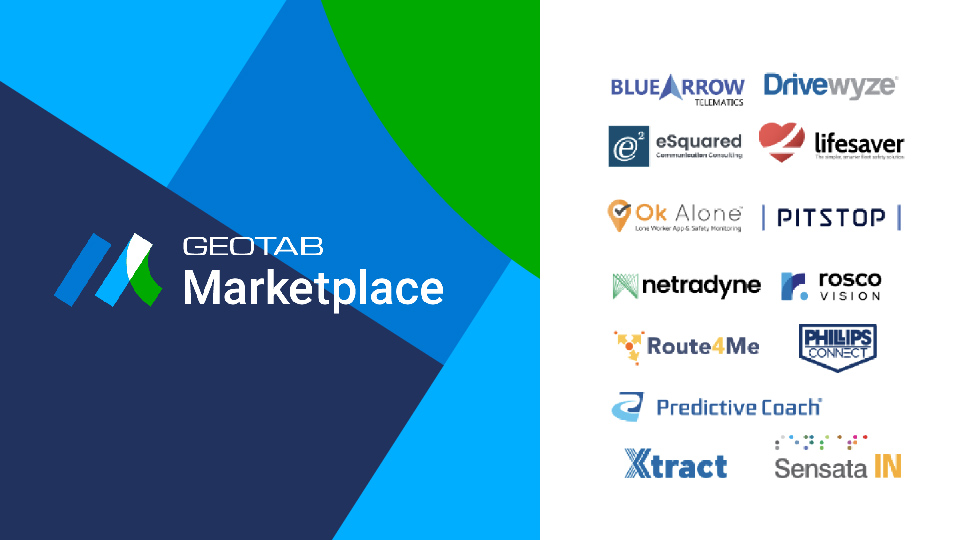
Empowering Choice: The Power of Collaboration in Our Marketplace
January 15, 2025
1 minute read

Top 7 Transportation Management Systems (TMS) Software
December 5, 2024
7 minute read
